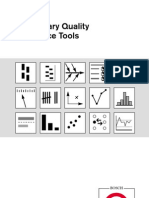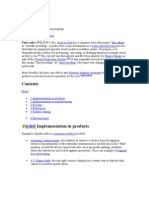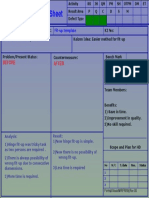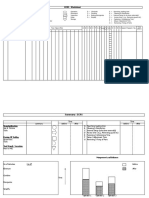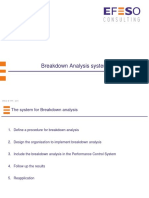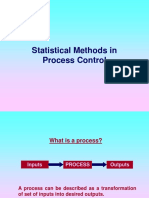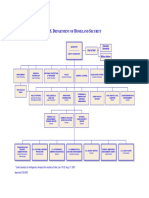0% found this document useful (0 votes)
229 views21 pagesProblem Solving for Organizations
This document discusses tools for basic problem solving. It introduces the PDCA (Plan-Do-Check-Act) approach for problem solving and continuous improvement. A variety of data analysis tools are also presented, including cause-and-effect diagrams to identify potential causes of problems, Pareto diagrams to prioritize issues, graphs like bar graphs and line graphs for visual analysis, scatter diagrams to show relationships between variables, histograms to analyze frequency distributions, and stratification to break problems down into parts. Examples are provided for each tool to illustrate its use.
Uploaded by
rakeshkumar20Copyright
© Attribution Non-Commercial (BY-NC)
We take content rights seriously. If you suspect this is your content, claim it here.
Available Formats
Download as PDF, TXT or read online on Scribd
0% found this document useful (0 votes)
229 views21 pagesProblem Solving for Organizations
This document discusses tools for basic problem solving. It introduces the PDCA (Plan-Do-Check-Act) approach for problem solving and continuous improvement. A variety of data analysis tools are also presented, including cause-and-effect diagrams to identify potential causes of problems, Pareto diagrams to prioritize issues, graphs like bar graphs and line graphs for visual analysis, scatter diagrams to show relationships between variables, histograms to analyze frequency distributions, and stratification to break problems down into parts. Examples are provided for each tool to illustrate its use.
Uploaded by
rakeshkumar20Copyright
© Attribution Non-Commercial (BY-NC)
We take content rights seriously. If you suspect this is your content, claim it here.
Available Formats
Download as PDF, TXT or read online on Scribd
/ 21

